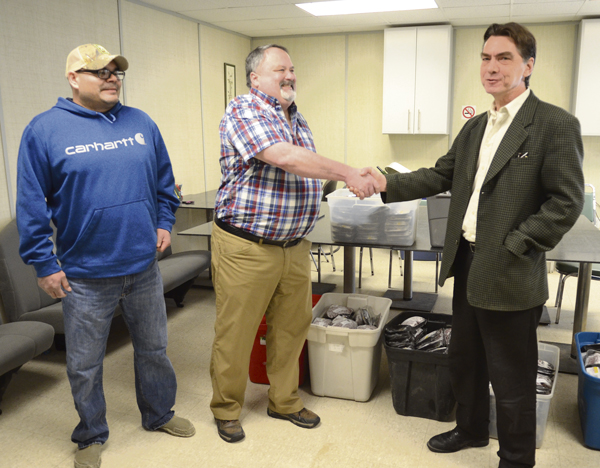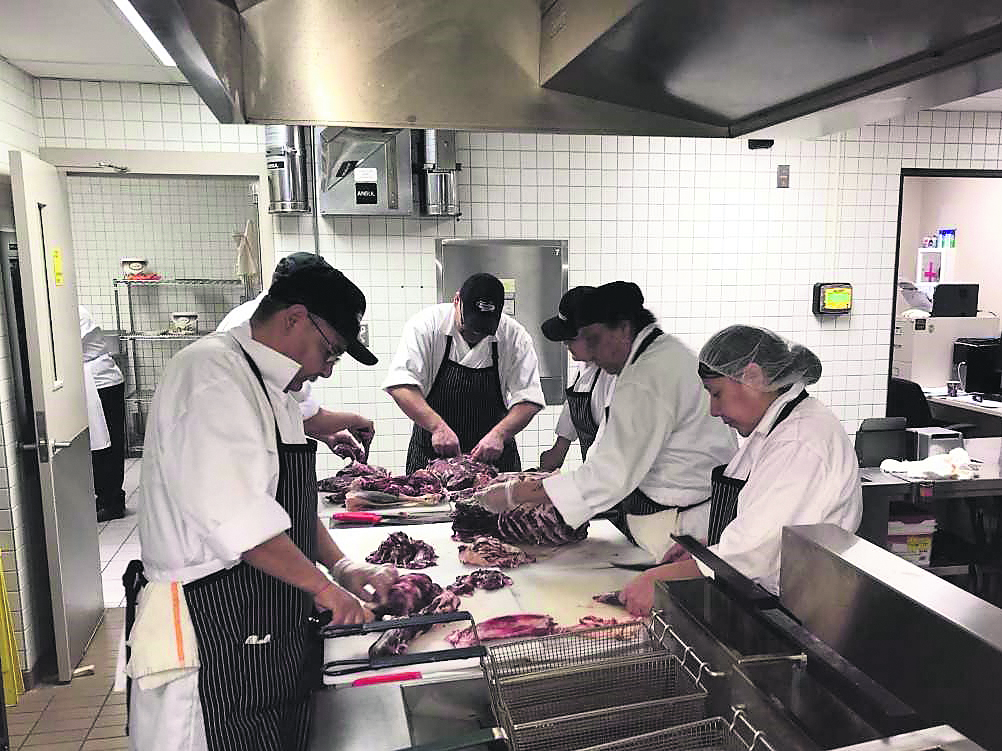
Thanks to a partnership bringing together several local groups and the generous work of a few local hunters, about 250 Prince Albert families will be able to get venison in the Food Bank hampers.
The 2018-19 Hunters with Heart program presented 287 pounds of meat harvested from eight deer to the Prince Albert food bank Tuesday. The program, led by Prince Albert Community Mobilization, works with hunters to donate meat, one of the food bank’s most sought-after items.
“This has been a project of great collaboration between several organizations in our community, and the people … did a good job of working together,” said Shelley Storey of Prince Albert Community Mobilization.
“A whole lot of steps needed to come together for this project to happen. We found all of those partners right here. Those partners are a tremendous group of people who worked really hard together for a worthy cause.”
The program had to connect with hunters, collect and safely store the hunted deer, arrange for testing for chronic wasting disease, complete all the required paperwork and get the meat properly butchered and processed before it could be donated to the food bank.
Don Erhardt from the Prince Albert Wildlife Federation helped connect hunters to the program and helped make sure the paperwork was in order. Gord Vaadeland, who helped coordinate previous game donations to the food bank through Canadian Parks and Wilderness Society (CPAWS) Saskatchewan, lent his expertise and connections to the project. Caribou Transport provided transportation and frozen storage for the deer. A conservation officer from the Ministry of Environment helped with transport and with ensuring all the paperwork was in order. Finally, students from the Saskatchewan Polytechnic retail meat cutting program butchered and prepared the cuts of the deer.
Storey said all that work was worth it to provide a sought-after need for Prince Albert’s less fortunate.
“We know the food bank staff work tirelessly … to provide quality food for those who need to access their services, and we know that about 50 per cent of those people are children,” she said.
“We know that meat is a good source of protein and that donations are always needed.”
Food bank executive director Kim Scruby said the 287 pounds was divided into about 290 portions, good for about 250 households, depending on family size. There could have been, but the butchery students had to cut around the wounds. Still, the donation will make a difference.
“This is a huge help,” he said.
“We get (meat) from time to time from grocery stores, and they do their best, but it’s infrequent. This has been a great, great initiative from everyone involved.”
Scruby said the food bank gets great support, but is always struggling to keep up with increasing demand.
The partners who helped get the meat from field to food bank were happy to be a part of it, and they’re hoping to be part of an even bigger contribution next year.
“We’re hoping this program will run in the future,” Erhardt said.
“We worked hard to get our members on board. We’re continuing to work with (northern outfitters) and hopefully we can get them on board in the next year.”
Erhardt thanked the hunters involved, as well as Gerald Parks, a local deer farmer, who contributed two animals to the cause.
Saskatchewan Polytechnic was also a key partner. Without the contribution of the butchery students, it would have been a lot more expensive and difficult to find a butcher and prepare the deer meat.

“It’s an excellent learning opportunity,” said instructor Don Cyr.
‘Wild game processing is integral in any small butcher shop across Saskatchewan. It provides students with good background experience when they try to go out and get a job.”
It’s not the first time the students have participated. They’ve previously prepped poached bison and culled boar for the food bank.
“We’ll definitely continue into the future with this,” Cyr added.
“It’s a good thing for the food bank and it’s a good thing for the community.”
This year was the first full season for the project. It started in 2017 but had to be halted as organizers worked out how to work around the rise in chronic wasting disease. Once that process was figured out, the campaign was restarted in fall of 2018.
Now that the first donation is in the books, the focus is on increasing awareness so more people can get involved when the program again takes donations in the fall.
“This was our first real try and we did really well, almost 300 pounds of food, which was more than we anticipated,” Storey said.
“Now, with the word getting out, next year we hope to double that.”

